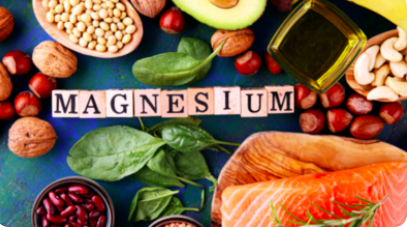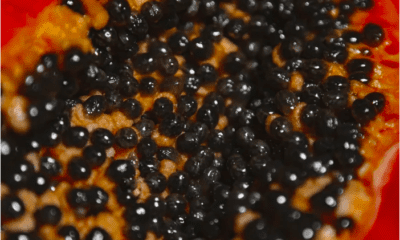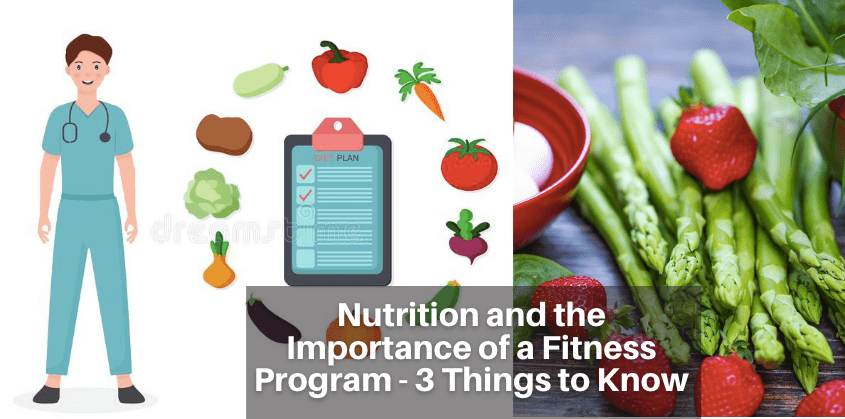Health
Understanding the Mystery Behind Strokes: Causes, Symptoms, and Prevention

Last Updated on May 28, 2023 by Nurse Vicky
Understanding the Mystery Behind Strokes: Causes, Symptoms, and Prevention
Strokes are a serious medical condition that can have devastating effects on individuals and their families. In recent years, the incidence of strokes has been on the rise, prompting concerns and the need for greater awareness.
In this comprehensive article, we will unravel the mystery behind strokes, exploring their causes, symptoms, and prevention strategies. By understanding the intricacies of this condition, we can take proactive steps to reduce the risk and improve outcomes for those affected.
What is a Stroke?
A stroke, also known as a cerebrovascular accident (CVA), occurs when the blood supply to the brain is disrupted, leading to damage or death of brain cells. This disruption can be caused by a blockage in the blood vessels (ischemic stroke) or by bleeding within the brain (hemorrhagic stroke).
Causes of Strokes
Strokes can have several underlying causes, including:
- Hypertension (High Blood Pressure): Uncontrolled high blood pressure can damage blood vessels over time, increasing the risk of a stroke.
- Atrial Fibrillation (AFib): This heart condition causes an irregular heartbeat, leading to the formation of blood clots that can travel to the brain.
- Smoking: Tobacco smoke contains harmful chemicals that can damage blood vessels and increase the risk of stroke.
- Diabetes: High blood sugar levels can damage blood vessels and increase the likelihood of a stroke.
- High Cholesterol: Elevated levels of cholesterol can lead to the formation of fatty deposits in blood vessels, increasing the risk of blockages.
- Sedentary Lifestyle: Lack of physical activity can contribute to obesity, high blood pressure, and other risk factors for strokes.
- Excessive Alcohol Consumption: Heavy drinking can raise blood pressure and contribute to the development of certain heart conditions, increasing stroke risk.
- Family History: Individuals with a family history of strokes or certain genetic conditions may be more susceptible.
- Age and Gender: The risk of strokes increases with age, and men tend to have a higher incidence of strokes compared to women.
- Other Risk Factors: Other factors such as obesity, poor diet, stress, and certain medical conditions can also contribute to stroke risk.
Signs and Symptoms of a Stroke
Recognizing the signs and symptoms of a stroke is crucial for prompt medical intervention. Common symptoms include:
- Sudden numbness or weakness in the face, arm, or leg, especially on one side of the body.
- Difficulty speaking or understanding speech.
- Sudden confusion, dizziness, or loss of balance.
- Severe headache with no known cause.
- Blurred or double vision.
- Trouble walking or coordinating movements.
Differentiating Between Ischemic and Hemorrhagic Strokes
Ischemic strokes and hemorrhagic strokes have distinct characteristics and require different treatment approaches. Ischemic strokes occur when a blood clot blocks a blood vessel, while hemorrhagic strokes result from bleeding within the brain.
Immediate Actions During a Stroke
If you suspect someone is having a stroke, it is vital to act quickly and call emergency services.
Remember the acronym FAST:
- Face: Ask the person to smile and check if one side of their face droops.
- Arms: Ask the person to raise both arms and observe if one arm drifts downward.
- Speech: Check if the person’s speech is slurred or if they have trouble speaking.
- Time: Time is of the essence during a stroke. Call emergency services immediately.
Diagnosis and Treatment of stroke
These may include:
- Physical Examination: A healthcare provider will assess the patient’s symptoms, and medical history, and conduct a physical examination to identify signs of a stroke.
- Imaging Tests: Imaging techniques such as computed tomography (CT) scan or magnetic resonance imaging (MRI) help visualize the brain and identify the type and location of the stroke.
- Blood Tests: Blood tests can provide valuable information about the patient’s overall health, including cholesterol levels, blood sugar levels, and clotting factors.
- Electrocardiogram (ECG): An ECG is performed to check for irregular heart rhythms, such as atrial fibrillation, which can contribute to stroke risk.
Once a stroke is diagnosed, immediate treatment is essential to minimize brain damage and prevent further complications.
The specific treatment approach depends on the type of stroke:
- Ischemic Stroke Treatment:
- Thrombolytic Therapy: Intravenous administration of clot-busting medications, such as tissue plasminogen activator (tPA), can help dissolve blood clots causing ischemic stroke.
- Mechanical Thrombectomy: In some cases, a minimally invasive procedure may be performed to physically remove the clot from the blocked blood vessel.
- Antiplatelet and Anticoagulant Medications: These medications may be prescribed to prevent the formation of blood clots or reduce the risk of future strokes.
- Hemorrhagic Stroke Treatment:
- Surgical Interventions: In certain cases, surgery may be necessary to repair ruptured blood vessels or remove blood from the brain.
- Medications: Medications may be administered to control blood pressure, reduce swelling, and prevent seizures.
Rehabilitation plays a crucial role in the recovery process after a stroke. Physical, occupational, and speech therapy may be recommended to regain lost abilities and improve quality of life.
Stroke Prevention Strategies
While some risk factors for strokes cannot be modified, such as age and family history, there are several proactive measures individuals can take to reduce their risk:
- Maintain a Healthy Blood Pressure: Regular monitoring, adopting a balanced diet, limiting sodium intake, and taking prescribed medications as directed can help manage blood pressure levels.
- Quit Smoking: Quitting smoking is one of the most impactful steps one can take to lower stroke risk. Seek support from healthcare professionals or smoking cessation programs.
- Control Diabetes: Keeping blood sugar levels within the target range through medication, diet, and exercise can help reduce the risk of strokes.
- Adopt a Heart-Healthy Diet: A diet rich in fruits, vegetables, whole grains, lean proteins, and low in saturated fats, cholesterol, and sodium can promote cardiovascular health.
- Engage in Regular Physical Activity: Aim for at least 150 minutes of moderate-intensity aerobic activity or 75 minutes of vigorous activity per week, along with strength training exercises.
- Limit Alcohol Consumption: Moderation is key. Men should limit alcohol to two drinks per day, while women should limit to one drink per day.
- Manage Stress: Adopt stress-management techniques such as exercise, meditation, deep breathing exercises, or engaging in hobbies to reduce the impact of stress on overall health.
- Maintain a Healthy Weight: Achieve and maintain healthy body weight through a combination of balanced eating and regular physical activity.
- Treat Atrial Fibrillation (AFib): If diagnosed with AFib, work closely with healthcare professionals to manage the condition and reduce the risk of blood clots.
- Regular Health Check-ups: Regular visits to healthcare providers can help monitor and manage any underlying conditions and assess stroke risk factors.
Antioxidants: Shielding Your Heart Antioxidants are powerful compounds that protect our cells from damage caused by free radicals. Free radicals are unstable molecules that can cause oxidative stress, leading to inflammation and damage to blood vessels. Including antioxidant-rich foods in your diet can help reduce the risk of heart disease.
Some top antioxidant sources for heart health include:
Fiber: Fueling Your Heart Fiber is a crucial nutrient that plays a vital role in maintaining heart health. High-fiber foods are known to lower cholesterol levels, regulate blood sugar, and promote healthy digestion. By incorporating fiber-rich foods into your diet, you can support your heart health. Here are some excellent sources of dietary fiber:
Vitamins and Minerals: Nourishing Your Heart Vitamins and minerals are essential for overall health, including heart health. These micronutrients play a critical role in maintaining a healthy heart and preventing cardiovascular issues.
Here are some key vitamins and minerals that are beneficial for heart health:
Specific Foods to Include for a Healthy Heart Now that we have a comprehensive understanding of heart-healthy nutrients, let’s explore specific foods that are beneficial for heart health. Including these foods in your diet can promote cardiovascular well-being and reduce the risk of heart disease.
Fatty Fish: A Superfood for Your Heart Fatty fish, such as salmon, mackerel, and sardines, are packed with heart-healthy omega-3 fatty acids. These fatty acids have been shown to reduce inflammation, lower triglyceride levels, and improve overall heart health. Consuming fatty fish at least twice a week can significantly benefit your heart.
Nuts and Seeds: Small but Mighty for Heart Health Nuts and seeds are nutrient-dense foods that are excellent for heart health. They are rich in heart-healthy fats, fiber, antioxidants, and other essential nutrients. Incorporating a variety of nuts and seeds into your diet, such as almonds, walnuts, flaxseeds, and chia seeds, can promote cardiovascular well-being.
Whole Grains: Fueling Your Heart with Fiber Whole grains, such as oats, brown rice, quinoa, and whole wheat, are excellent sources of dietary fiber. Consuming whole grains regularly can help lower cholesterol levels, regulate blood sugar, and promote heart health. Choose whole grain options over refined grains for optimal heart health benefits.
Leafy Greens: A Nutrient Power
Berries: Sweet and Tangy Treats for Your Heart Berries, such as strawberries, blueberries, raspberries, and blackberries, are delicious and heart-healthy treats.
These colorful fruits are loaded with antioxidants, fiber, and other nutrients that promote cardiovascular health. Including a variety of berries in your diet can help reduce inflammation, lower cholesterol levels, and support heart health.
Dark Chocolate: A Heart-Healthy Indulgence Yes, you read that right! Dark chocolate, when consumed in moderation and in its purest form, can be a heart-healthy indulgence.
Dark chocolate is rich in antioxidants, particularly flavonoids, which have been shown to reduce the risk of heart disease. Opt for dark chocolate with a high cocoa content (70% or higher) and enjoy it in small amounts as a treat for your heart.
Olive Oil: Liquid Gold for Your Heart Olive oil is a heart-healthy oil that is rich in monounsaturated fats, which have been shown to improve heart health. Using olive oil as your primary cooking oil and for salad dressings can help lower LDL (bad) cholesterol levels and reduce the risk of heart disease. Look for extra-virgin olive oil for the highest quality and maximum heart-healthy benefits.
Specific Foods to Avoid for Heart Health In addition to knowing what foods to include for a healthy heart, it’s equally important to be aware of foods that can negatively impact cardiovascular health. Here are some foods to limit or avoid in your diet to promote optimal heart health.
Processed Foods: A Heart Health Enemy Processed foods, such as fast foods, packaged snacks, sugary beverages, and processed meats, are often high in unhealthy fats, sodium, added sugars, and artificial ingredients.
These foods can contribute to high cholesterol levels, high blood pressure, inflammation, and weight gain, all of which increase the risk of heart disease. Limiting processed foods in your diet and opting for whole, unprocessed foods is crucial for heart health.
Saturated and Trans Fats: Heart-Unfriendly Fats Saturated fats, commonly found in animal-based products like fatty cuts of meat, full-fat dairy, and tropical oils like coconut oil and palm oil, can raise LDL (bad) cholesterol levels and increase the risk of heart disease.
Trans fats, found in partially hydrogenated oils often used in processed and fried foods, are even more detrimental to heart health as they raise not only LDL cholesterol levels but also lower HDL (good) cholesterol levels. Avoiding or limiting the consumption of saturated and trans fats is essential for heart health.
Added Sugars: A Sweet Saboteur of Heart Health Added sugars, found in many processed foods, beverages, and sweets, can contribute to weight gain, high blood sugar levels, inflammation, and other risk factors for heart disease. Limiting added sugars in your diet and opting for natural sources of sweetness like fruits is crucial for maintaining a healthy heart.
Excessive Sodium: A Silent Killer for Heart Health High sodium intake can lead to increased blood pressure, a significant risk factor for heart disease. Processed foods, canned goods, restaurant meals, and salty snacks are often high in sodium.
Frequently Asked Questions
Here are some common questions about strokes:
Can strokes be prevented?
Yes, certain lifestyle modifications and medical interventions can help reduce the risk of strokes. These include maintaining healthy blood pressure, quitting smoking, controlling diabetes, adopting a heart-healthy diet, engaging in regular physical activity, limiting alcohol consumption, managing stress, maintaining a healthy weight, treating atrial fibrillation, and attending regular health check-ups.
Are there any warning signs before a stroke occurs?
Yes, there are warning signs known as transient ischemic attacks (TIAs) or “mini-strokes.” TIAs are temporary disruptions of blood flow to the brain and can serve as warning signs of an impending stroke. It is essential to seek medical attention if any TIA symptoms occur.
How long does stroke recovery take?
Stroke recovery varies for each individual and depends on the severity of the stroke and the area of the brain affected. Some people may experience significant improvement within a few weeks or months, while others may require more extended periods of rehabilitation and recovery.
Can a stroke be fatal?
Yes, strokes can be fatal, particularly if not promptly treated. The severity of the stroke and the areas of the brain affected play a significant role in determining the outcome. Immediate medical attention is crucial to improve the chances of survival and minimize long-term complications.
Can young people have strokes?
While strokes are more common in older adults, they can occur in younger individuals as well. Certain risk factors, such as congenital heart defects, blood disorders, drug abuse, and certain medical conditions, can increase the likelihood of strokes in younger populations.
Is there a genetic predisposition to strokes?
While family history can contribute to an increased risk of strokes, it does not necessarily mean that an individual will experience a stroke. Having a family history of strokes should prompt individuals to be more vigilant about managing risk factors and adopting a healthy lifestyle.
Can a stroke cause permanent disability?
There are certain genetic factors that can increase the risk of strokes, such as certain gene mutations or conditions that run in families. However, it is important to note that strokes are not solely determined by genetics, and lifestyle factors also play a significant role.
The extent of disability resulting from a stroke varies. Some individuals may experience mild impairments that can be managed with rehabilitation, while others may have more severe disabilities that require long-term assistance. The success of rehabilitation and recovery efforts also plays a crucial role in minimizing disability.
Can a stroke recur?
Yes, individuals who have experienced a stroke are at an increased risk of having another one. However, with proper medical management, lifestyle changes, and adherence to preventive strategies, the risk of recurrence can be significantly reduced.
Can I eat any type of chocolate for heart health?
It’s best to opt for dark chocolate with a high cocoa content (70% or higher) for heart-healthy benefits, as it is rich in antioxidants and flavonoids that promote heart health.
Can I still eat meat for a healthy heart?
Yes, lean meats such as poultry and fish can be included in a heart-healthy diet. It’s important to choose lean cuts of meat and limit consumption of processed and fatty meats.
Can I use any type of oil for cooking?
Using heart-healthy oils such as olive oil or canola oil for cooking and salad dressings is recommended for promoting heart health.
How much added sugar is too much for a healthy heart?
Limiting added sugar intake to less than 10% of your daily calorie intake is recommended for optimal heart health.
Can I eat processed foods occasionally?
It’s best to limit processed foods in your diet and opt for whole, unprocessed foods as much as possible for heart-healthy eating.
Is it necessary to avoid all saturated fats for heart health?
While it’s important to limit saturated fats, it’s not necessary to avoid them entirely. Choosing lean cuts of meat, low-fat dairy, and using oils such as olive oil in moderation can be part of a heart-healthy diet.
How much sodium should I consume for a healthy heart?
It’s recommended to limit sodium intake to less than 2,300 milligrams (mg) per day for optimal heart health.
Can I drink alcohol for heart health?
Moderate alcohol consumption, such as one drink per day for women and up to two drinks per day for men, may have some cardiovascular benefits. However, it’s important to consult with a healthcare professional and consume alcohol in moderation, as excessive alcohol intake can harm heart health.
Can I have cheat meals on a heart-healthy diet?
It’s best to limit cheat meals or indulgences that are high in unhealthy fats, added sugars, and sodium, as these can negatively impact heart health. Opting for healthier alternatives and practicing moderation is key.
Is it necessary to consult with a healthcare professional or a registered dietitian for a heart-healthy diet?
Consulting with a healthcare professional or a registered dietitian can provide personalized guidance and recommendations based on your individual health needs and goals, and can help you create a heart-healthy diet plan that is tailored to your specific needs.
Conclusion
Strokes are a complex medical condition with potentially devastating consequences. By understanding the causes, symptoms, and prevention strategies, we can empower ourselves and others to take proactive steps in reducing the risk of strokes.
Remember, a healthy lifestyle, regular medical check-ups, and prompt medical attention are vital in the fight against strokes. Stay informed, be vigilant, and prioritize your brain health to lead a fulfilling and stroke-free life.
Health
7 Fascinating Facts About Magnesium You Probably Didn’t Know

7 Fascinating Facts About Magnesium You Probably Didn’t Know
Magnesium is one of the most essential minerals for our health, yet many people are unaware of its significance.
This vital nutrient plays a crucial role in numerous bodily functions, from energy production to maintaining a healthy heart.
In this article, we will delve into seven intriguing facts about magnesium that may surprise you and help you appreciate its importance in your daily life.
What is Magnesium?
Magnesium is a naturally occurring mineral found in various foods and is vital for human health.
It is the fourth most abundant mineral in the body and is involved in over 300 biochemical reactions.
Magnesium contributes to nerve function, muscle contraction, blood sugar control, and blood pressure regulation.
It can be obtained from various dietary sources, including leafy greens, nuts, seeds, whole grains, and legumes.
1. Magnesium is Involved in Energy Production
Did you know that magnesium is essential for converting food into energy? This mineral plays a critical role in the activation of ATP (adenosine triphosphate), the energy currency of our cells.
Without sufficient magnesium, your body struggles to produce energy effectively, which can lead to feelings of fatigue and weakness.
How Does It Work?
ATP production occurs in the mitochondria, often referred to as the powerhouse of the cell.
Magnesium helps activate enzymes involved in this energy production process, ensuring that your body has enough energy to perform daily activities.
2. A Key Player in Bone Health
Magnesium is vital for maintaining strong and healthy bones. Approximately 60% of the magnesium in your body is stored in your bones.
It contributes to bone density and strength by regulating calcium levels in the body, which is crucial for bone formation.
The Calcium Connection
Calcium is often touted as the primary mineral for bone health, but magnesium plays an equally important role.
An imbalance of these two minerals can lead to bone-related issues such as osteoporosis.
Ensuring adequate magnesium intake is essential for maintaining optimal bone health.
3. Supports Heart Health
Magnesium is a crucial mineral for cardiovascular health. It helps maintain normal heart rhythms and can reduce the risk of heart disease.
Adequate magnesium levels are associated with lower blood pressure and reduced risk of heart attacks.
Regulation of Blood Pressure
Magnesium helps relax blood vessels, which can lead to lower blood pressure.
Studies have shown that individuals with higher magnesium intake tend to have better cardiovascular health. Including magnesium-rich foods in your diet can be an effective strategy for supporting heart health.
4. Magnesium and Mental Health
Emerging research suggests a strong link between magnesium levels and mental health.
Magnesium plays a role in regulating neurotransmitters, which are essential for mood stabilization.
Low magnesium levels have been associated with an increased risk of depression and anxiety.
Cognitive Function
Magnesium may also enhance cognitive function. Studies have indicated that adequate magnesium intake can improve memory and learning abilities.
This mineral is essential for brain health, making it vital for overall mental well-being.
5. Magnesium Deficiency is Common
Despite its importance, magnesium deficiency is surprisingly common.
Factors such as poor diet, chronic stress, and certain medical conditions can lead to low magnesium levels.
Symptoms of magnesium deficiency can include muscle cramps, fatigue, and irritability.
Risk Factors for Deficiency
Certain populations are at a higher risk for magnesium deficiency, including the elderly, those with gastrointestinal diseases, and individuals who consume a diet low in whole foods.
It’s essential to recognize the signs of deficiency and consider increasing your magnesium intake through diet or supplements if necessary.
6. Natural Relaxant
Magnesium is often referred to as a natural relaxant due to its calming effects on the nervous system.
It helps regulate cortisol levels (the stress hormone) and promotes relaxation, making it beneficial for those dealing with anxiety and stress.
Improving Sleep Quality
In addition to its relaxing properties, magnesium can improve sleep quality.
Many people find that magnesium supplements help them fall asleep faster and stay asleep longer, making it a popular choice for those struggling with insomnia.
7. Magnesium in Sports Performance
Athletes and active individuals often benefit from magnesium’s role in muscle function and recovery.
Magnesium helps prevent muscle cramps and can aid in post-exercise recovery by reducing inflammation and promoting relaxation.
Enhancing Athletic Performance
Research has shown that adequate magnesium levels can enhance athletic performance.
It is involved in muscle contraction and relaxation, making it essential for peak performance during exercise.
Conclusion
Magnesium is a powerhouse mineral that plays an essential role in various bodily functions. From supporting energy production to promoting heart health and mental well-being, its importance cannot be overstated.
Ensuring adequate magnesium intake through a balanced diet rich in whole foods can significantly enhance your overall health and quality of life.
If you suspect you may be deficient in magnesium, consider consulting with a healthcare provider to assess your levels and discuss dietary changes or supplements that may be beneficial.
FAQs about Magnesium
1. What are the best dietary sources of magnesium?
The best sources of magnesium include leafy green vegetables (like spinach), nuts (especially almonds and cashews), seeds (such as pumpkin seeds), whole grains (like brown rice and quinoa), and legumes (like beans and lentils).
2. How much magnesium do I need daily?
The recommended daily intake of magnesium varies by age and gender. Generally, adult men should aim for about 400-420 mg per day, while adult women should aim for about 310-320 mg.
3. Can I take magnesium supplements?
Yes, magnesium supplements are available and can be beneficial, especially for individuals who may not get enough from their diet. However, it’s essential to consult with a healthcare provider before starting any supplement regimen.
4. What are the symptoms of magnesium deficiency?
Symptoms of magnesium deficiency can include muscle cramps, fatigue, weakness, irritability, and irregular heart rhythms. If you experience these symptoms, consult a healthcare professional.
5. Is it possible to get too much magnesium?
Yes, while magnesium from food sources is generally safe, excessive supplementation can lead to toxicity, causing symptoms like diarrhea, nausea, and abdominal cramping. Always consult a healthcare provider before increasing your magnesium intake significantly.
References:
Health
Whooping Cough: Understanding Its Resurgence and Prevention

Health
The Power of Beans: Why This Superfood is a Nutritional Treasure
-

 Trending Stories1 year ago
Trending Stories1 year agoCDC: 1 in 4 Americans Still COVID-Free by End of 2022
-

 Health5 years ago
Health5 years agoMeghan Trainor Shares Motivational New Song ‘Blink’
-

 Health6 months ago
Health6 months agoHow Do Pawpaw Seeds Support Cardiovascular Health?
-

 Health2 years ago
Health2 years agoHow Long Does Monkey Pox Last Before It Surfaces in the Body?
-

 Health3 years ago
Health3 years agoWhat Causes Swollen Body? Understanding Edema and its Triggers
-

 Health3 years ago
Health3 years agoNutrition and the Importance of a Fitness Program – 3 Things to Know
-

 Health3 years ago
Health3 years ago5 Weird Reasons Why Pimples Disappear After Marriage
-

 Health2 years ago
Health2 years agoHealth Benefits Of Pawpaw Seed? 7 Things To Know






